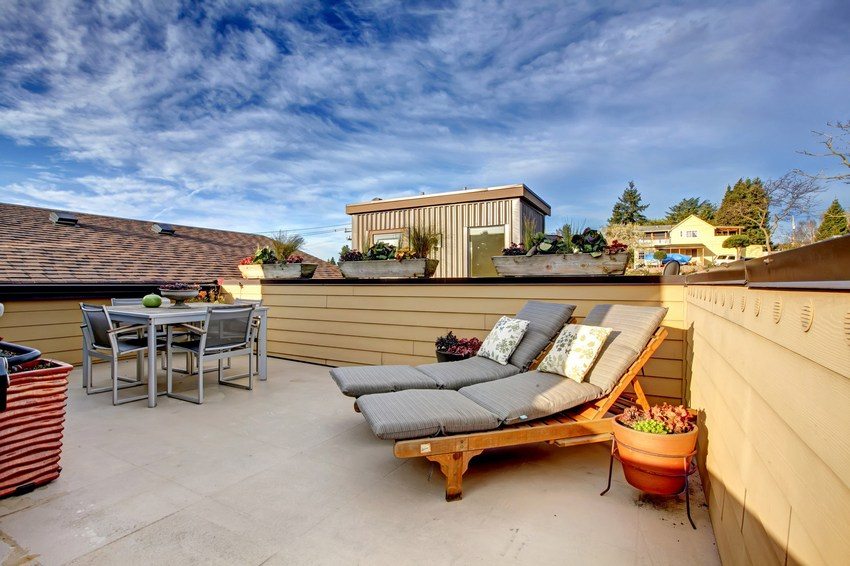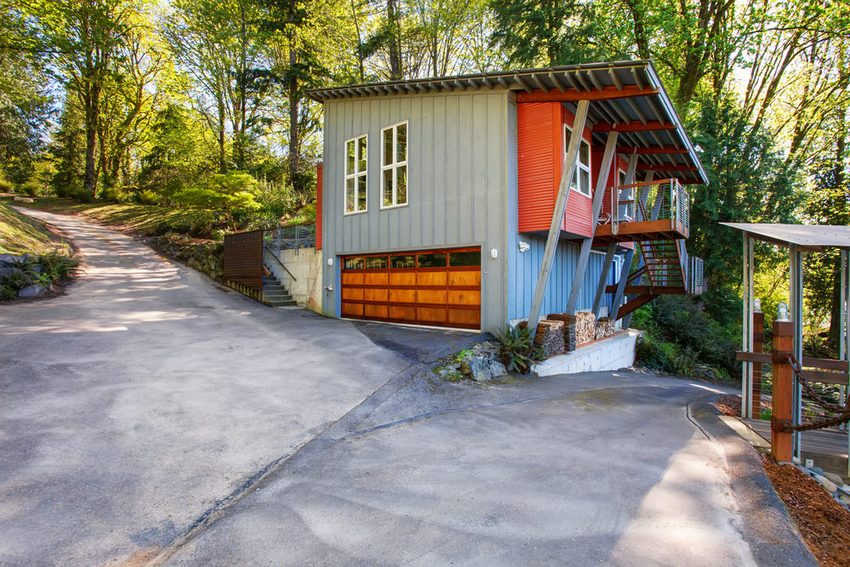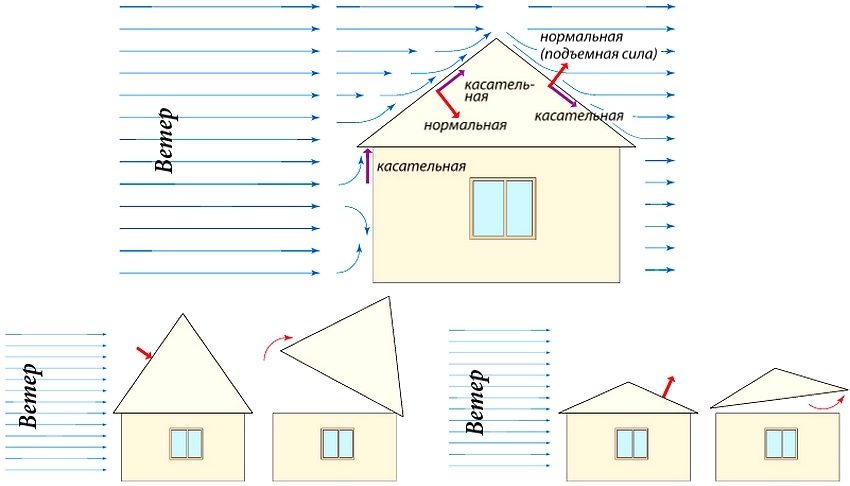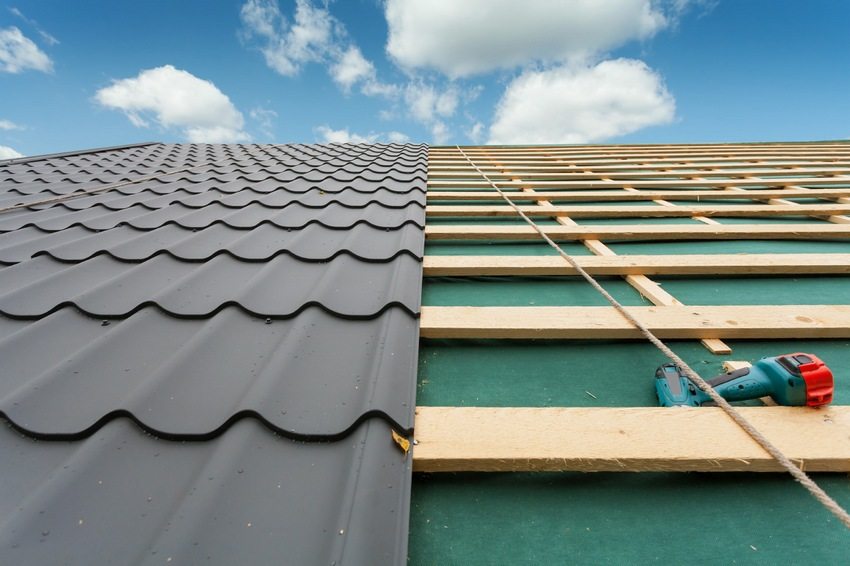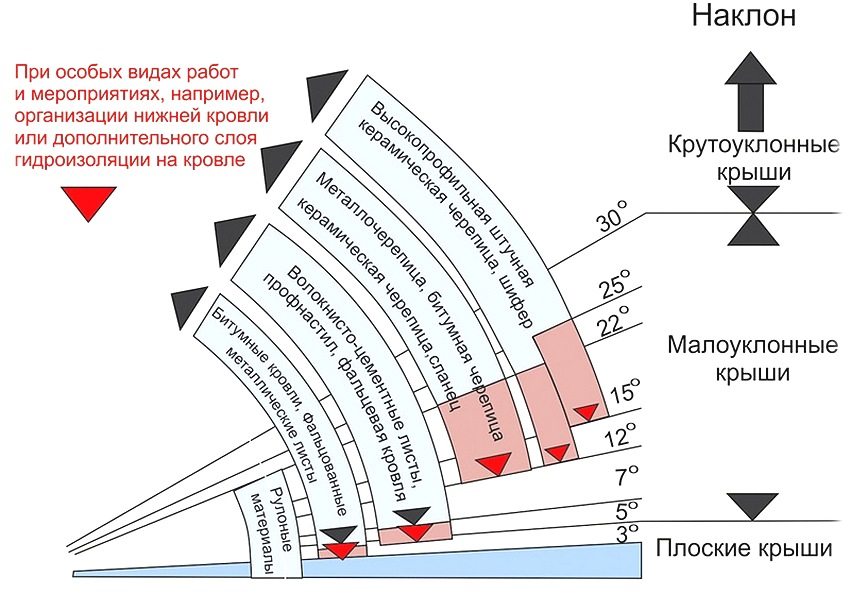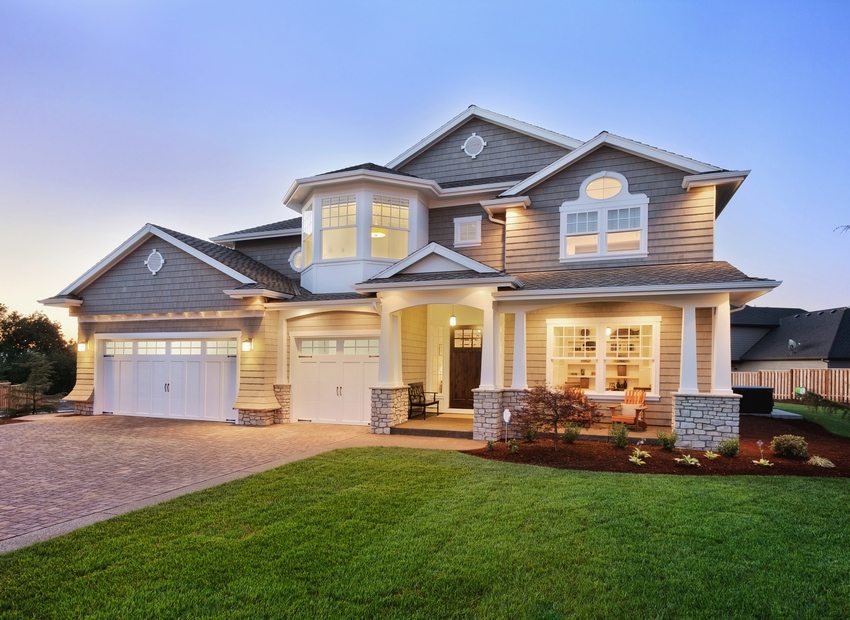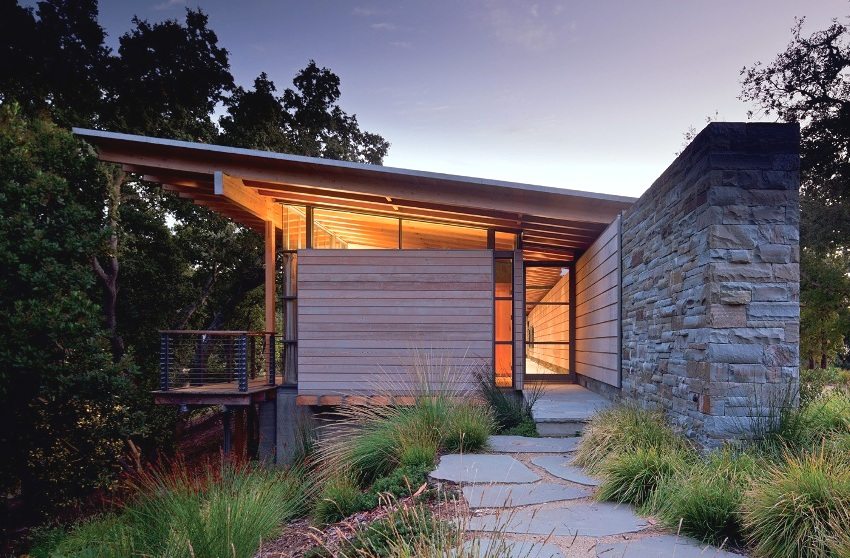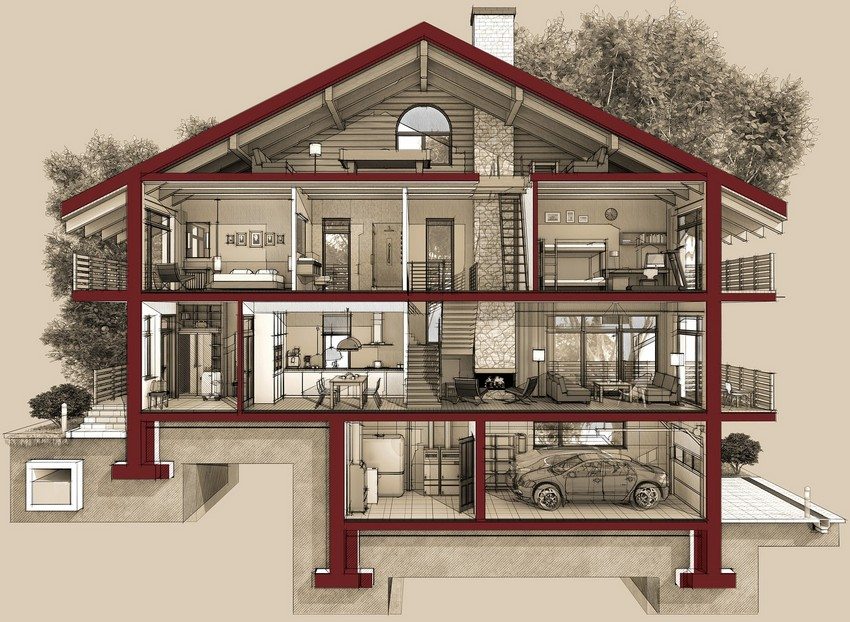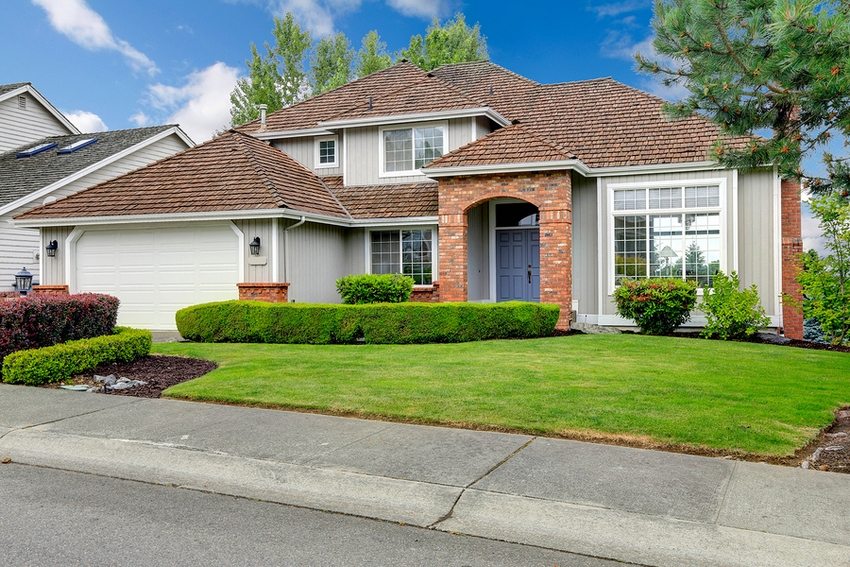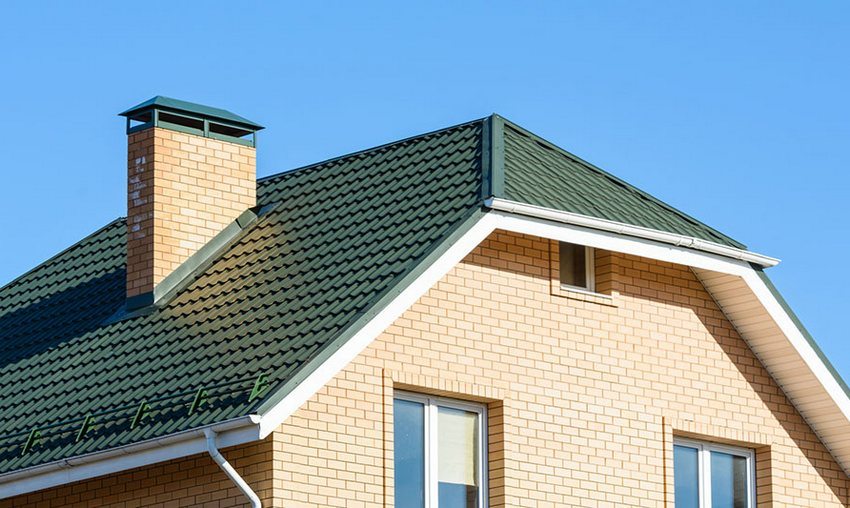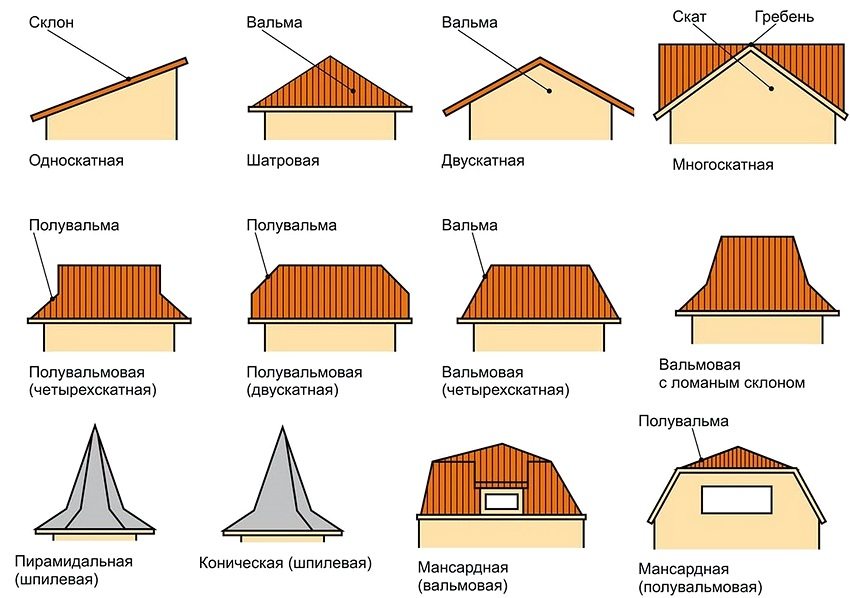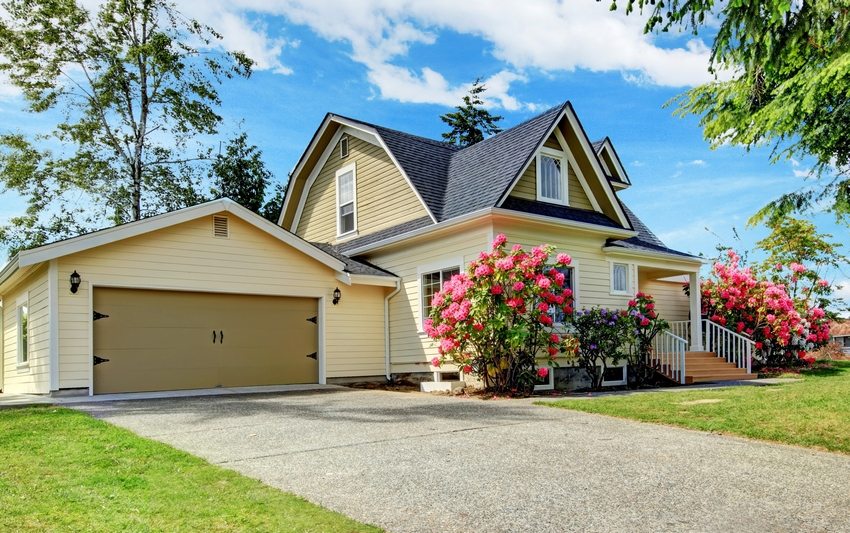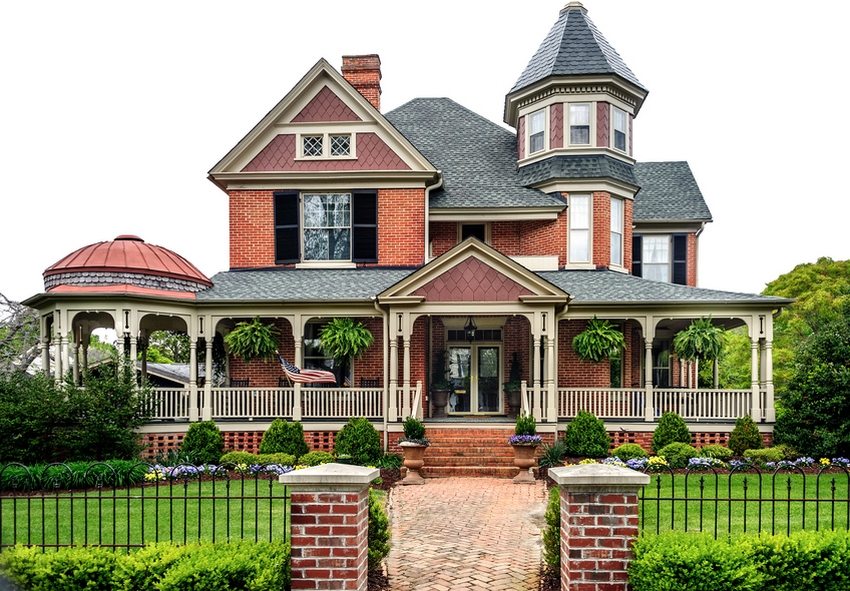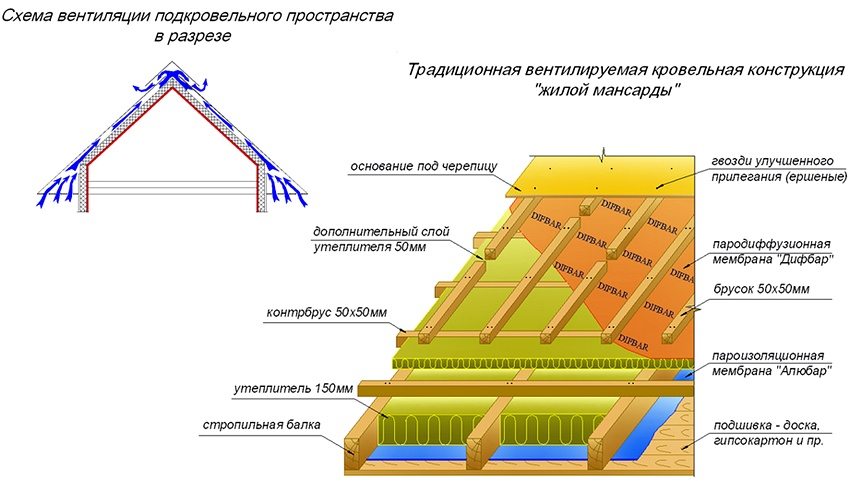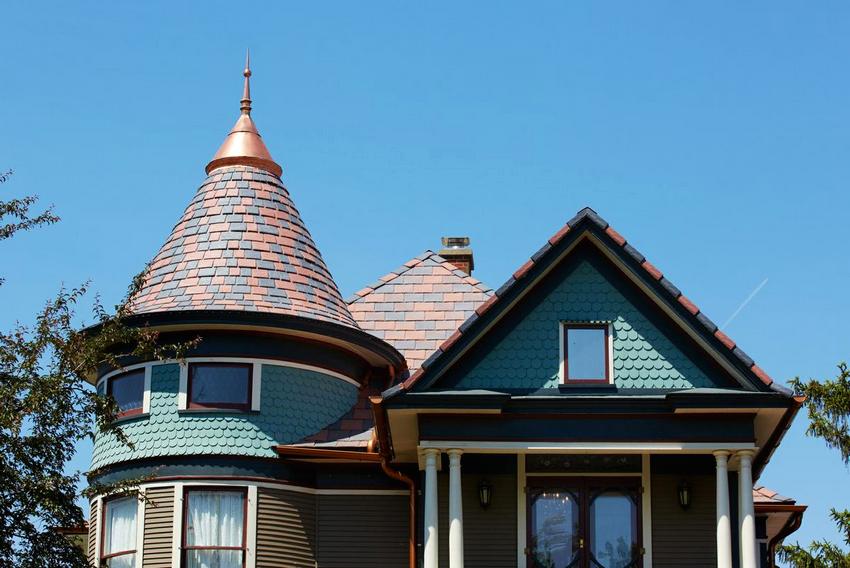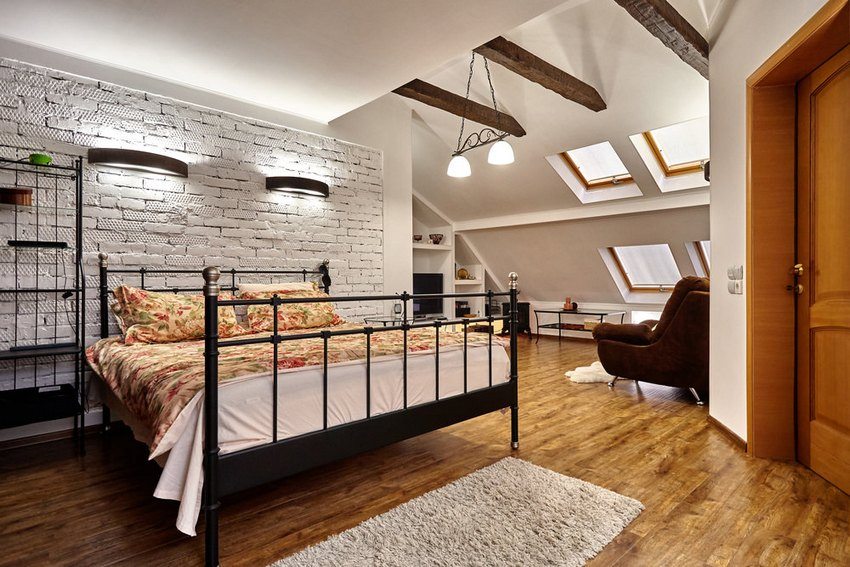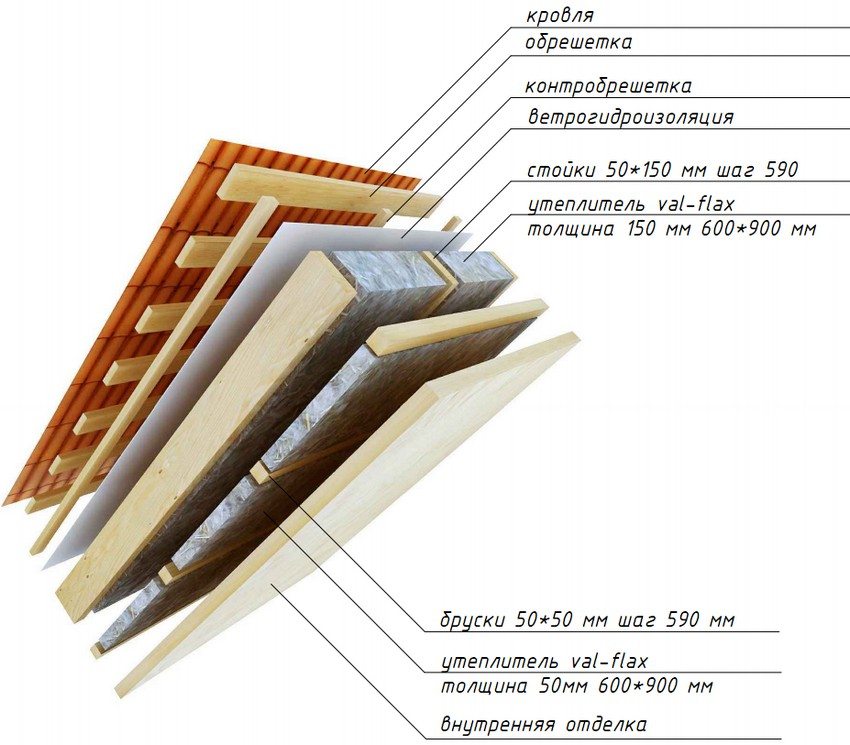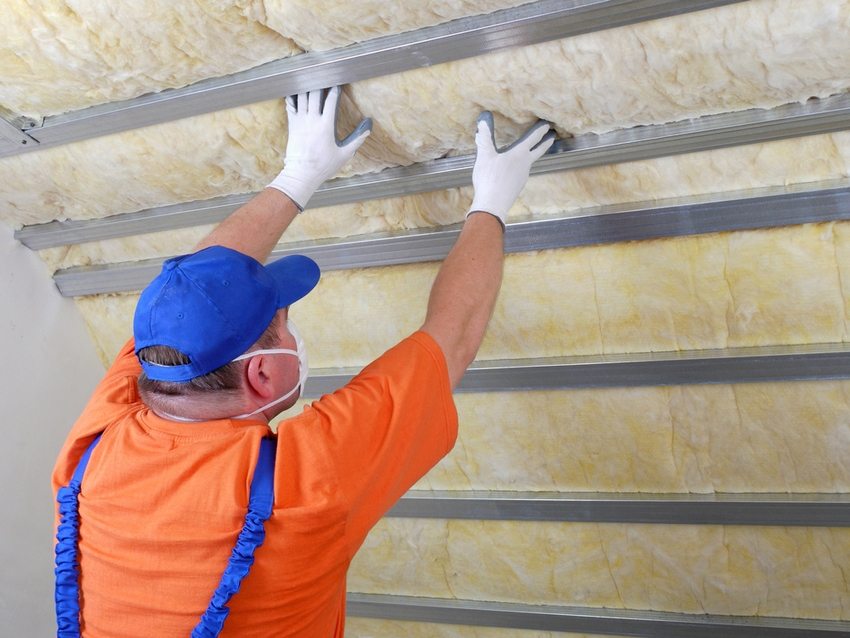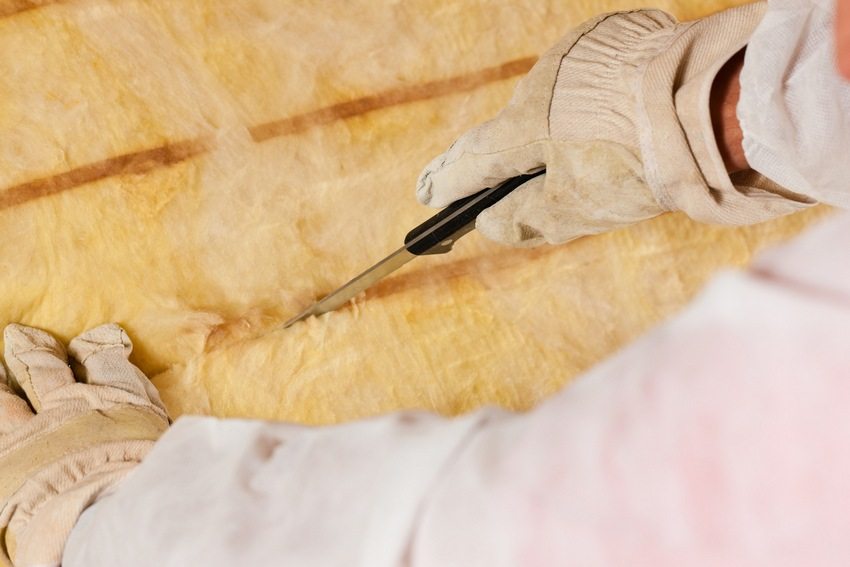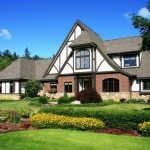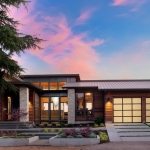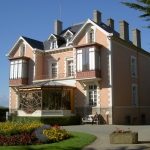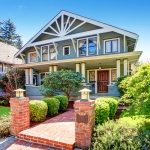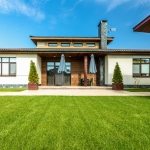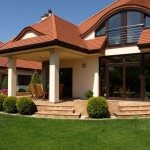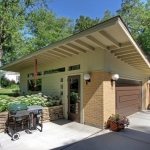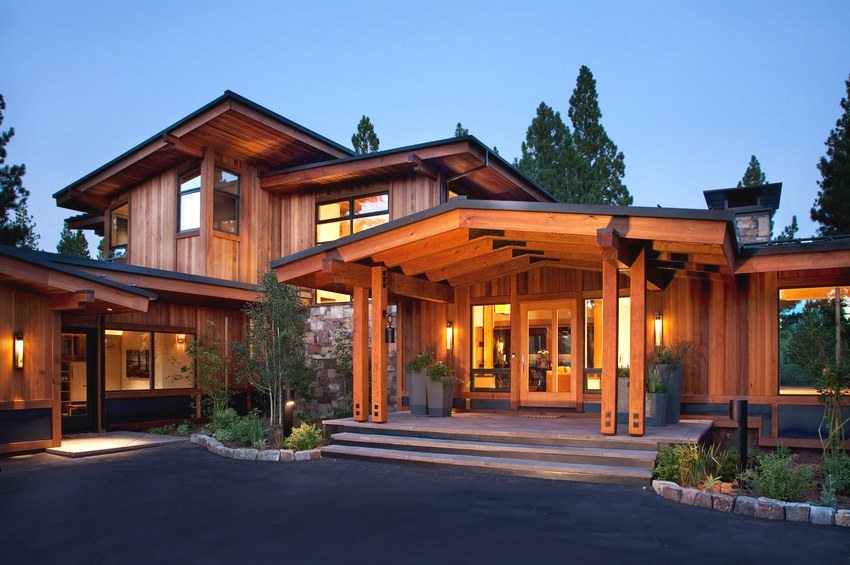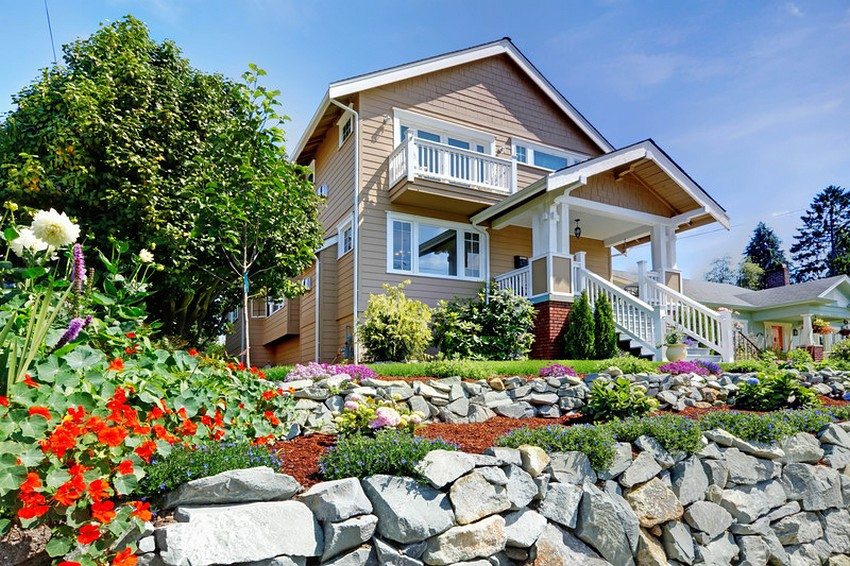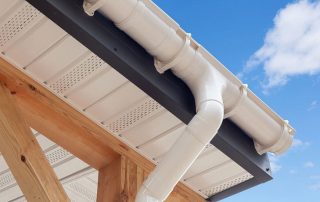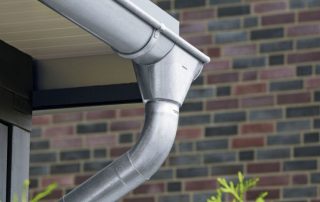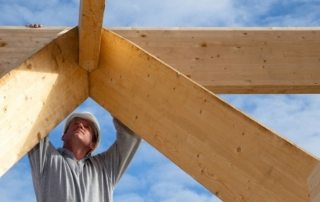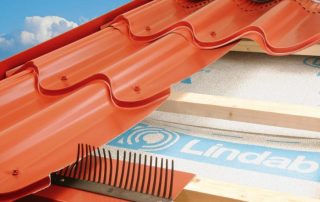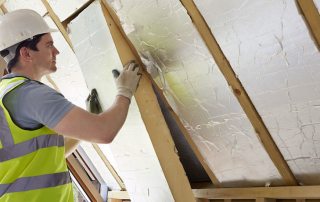During its entire service life, the roof must protect the home from rain, snow, wind, scorching rays of the sun and winter frosts, keeping the house warm and cozy. Only a properly designed roof for a private house can cope with the tasks set. Types of roofs by design include many different options for arrangement, each of which must take into account all the architectural nuances of housing construction, and also be appropriate in a particular climatic zone.
Content [Hide]
Existing types of roofs
Choosing the right and reliable roof is a serious and responsible mission. After all, it is being built not for one season, but for decades. In addition, a beautiful roof is also a decent look for your home. Photos of private houses, whose beautiful roofs flawlessly complete the architectural composition, are a clear confirmation of this. Also, each developer seeks to give the roof of the house being built a rational form that can withstand all the vagaries of the weather.
The shapes of roofs for private houses, photos of which can be found on the Internet, are distinguished by an amazing variety. Numerous design models can form the basis for bold ideas and help you make your choice. Modern roof projects of private houses allow you to realize the most original ideas in any style.
Before dwelling on the optimal version of the roof of a private house, you should familiarize yourself with the existing forms and design features of roofs. The main criteria by which different types of roofs are classified are:
- roof slope;
- form of construction;
- roof material.
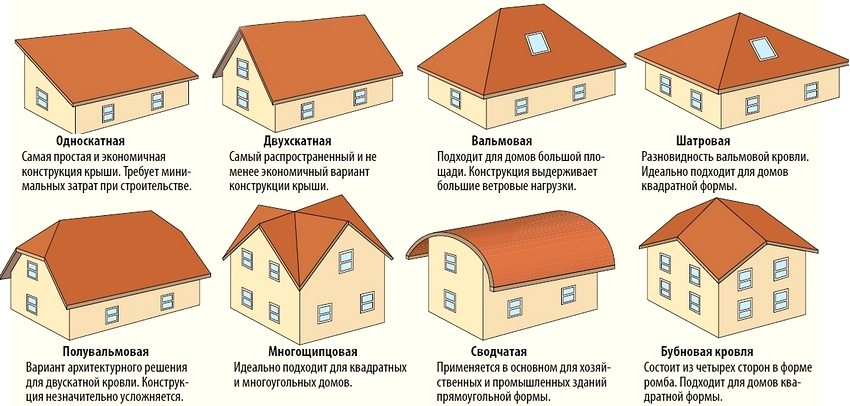
The choice of one or another roof structure depends on many factors, for example, the climate in the region
How ideal this or that type of roof is for a house depends on the correct selection of all three parameters. The main factor influencing the roof structure is the climatic zone. Climate features will influence the slope of the structure, its shape and the choice of roofing material. It makes no sense to build a roof with a slight slope in an area where there is a large amount of snowfall: they will accumulate and destroy the structure.
Flat roofs are relatively inexpensive to perform, since in this case minimal costs for materials and work on the arrangement will be required. You don't have to worry about the wind blowing off the roof. Many on flat roofs equip additional outdoor areas for various needs. But it should be borne in mind that precipitation will spoil such a roof, forming puddles on the surface.
Useful advice! To provide a flat structure with a natural drainage of water, it is recommended to pour a layer of expanded clay at a slight angle.
There is also a division of roofs into unexploited and exploited, attic and non-attic. Operated roofs are used as playgrounds for recreation and sports, covering them with a special material. The area of such a roof, as a rule, is equal to the area of the house itself, so many owners think about the rational use of this space. A serious disadvantage is the lack of protection of the coating from precipitation.

When laying metal tiles, the maximum angle of inclination is not standardized, but the minimum is 15 °
Attic structures are called structures when the distance between the ceiling and the roof surface is not more than 1.5 m. Usually, the space under such a roof is exploited for technical purposes. Loft roofs are used when there is an idea to use the space under the roof as a living room - an attic. In addition, such an additional floor can be built on top of an existing house.
In a large group, varieties of roofs are distinguished by their geometric shape and the number of slopes. A pitched roof is called if its angle of inclination exceeds 10 °. Roofs are available with one, two and four slopes. More complex structures have combined slopes - these are hipped roofs, multi-gable roofs. Less common in private construction are domed or conical models. Roofs that include several different shapes are called combined.
Types of roofs for private houses: we select the optimal slope
Depending on the slope, flat and pitched roofs are distinguished. The slope is understood as the angle of inclination of the slope relative to the horizon line. It is measured in degrees or as a percentage of roof height to span length. Thus, a 100% slope corresponds to 45 °. For the convenience of translating these indicators, a special table has been developed.
The main reason for the slope is the timely removal of precipitation from the roof. Roofs with a slight slope (up to 1%) will often leak and cause inconvenience to owners. In addition, in terms of design, the surfaces of such roofs do not look aesthetically pleasing for private houses. Photos of flat roofs indicate that most often such structures are used for change houses, garages and outbuildings.
Correspondence table of angle degree to percentage of roof slope:
| Degrees, º | Interest,% | Degrees, º | Interest,% | Degrees, º | Interest,% |
| 1 | 1,7 | 16 | 28,7 | 31 | 60,0 |
| 2 | 3,5 | 17 | 30,5 | 32 | 62,4 |
| 3 | 5,2 | 18 | 32,5 | 33 | 64,9 |
| 4 | 7,0 | 19 | 34,4 | 34 | 67,4 |
| 5 | 8,7 | 20 | 36,4 | 35 | 70,0 |
| 6 | 10,5 | 21 | 38,4 | 36 | 75,6 |
| 7 | 12,3 | 22 | 40,4 | 37 | 78,9 |
| 8 | 14,1 | 23 | 42,4 | 38 | 80,9 |
| 9 | 15,8 | 24 | 44,5 | 39 | 83,9 |
| 10 | 17,6 | 25 | 46,6 | 40 | 86,0 |
| 11 | 19,3 | 26 | 48,7 | 41 | 93,0 |
| 12 | 21,1 | 27 | 50,9 | 42 | 93,0 |
| 13 | 23,0 | 28 | 53,1 | 43 | 93,0 |
| 14 | 24,9 | 29 | 55,4 | 44 | 96,5 |
| 15 | 26,8 | 30 | 57,7 | 45 | 100 |
In addition to precipitation, the wind also affects the roof. When the slope increases by 20-30 °, the wind load increases by 5 times. And if the slope is small, the wind stream can penetrate into the roof through the joints of the coating and easily tear off the structure. With the help of a competently selected roof project of a private house, you can get the correct slope angle and avoid the possible consequences of the disaster.
Useful advice! When choosing a roof option, it should be borne in mind that the maximum value of the snow load on the roof is achieved when the slope is 30 °. For the roof to be able to clean itself, the slope must be 45 °.
In order to correctly determine the required slope, it is necessary to calculate the ratio of the size of the ridge to ½ the width of the house.The resulting value is multiplied by 100 - this will be the value of the roof slope. For the convenience of determining the angle of inclination of the roof, professional builders use special calculations and graphs. They can be easily found on the Internet. As for the cost of building a roof, the greater the slope, the more expensive it will be to build.
Related article:
Do-it-yourself shed roof step by step: installation features. Advantages and disadvantages of a pitched roof design. Selection of materials, their preparation and calculation of the required amount. Slope angle.
Despite the fact that the construction of pitched roofs is more expensive, for each developer, the reliability of the roof will be a priority, rather than the cost of its construction. Thus, a pitched model will be the correct type of roof for a private house. The slope of such a roof will be determined by the wind and snow load on the structure, as well as by its attractive appearance. In addition, the angle of inclination is determined by the use of a particular roof covering. For laying each type of material, manufacturing companies recommend the appropriate slope.
The use of roof coverings depending on the slope of the roof
In order for the roof to become reliable protection for the house, in the choice of roofing, it is imperative to take into account the angle of inclination of the slopes:
- slate (asbestos-cement corrugated sheets) - such a coating can be used with a roof slope of 13 to 60 °. If the angle of inclination is less than 13 °, water will seep into the joints, and in winter, snow will clog. This will lead to a significant reduction in the life of the roof;
- ceramic tiles - the optimal slope for this material is in the range from 30 to 60 °. When laying such tiles on roofs with a slope of less than 25 °, measures should be taken to improve ventilation and waterproofing;
- metal tile - the popularity of using this material for the roof of a private house (photos confirm this) is very high. In addition to many advantages, when laying metal tiles, the maximum angle of inclination is not standardized. The minimum slope is 15 °;
- corrugated board - used mainly for outbuildings. Laying is carried out with a slope of 10 ° without a limit;
- bituminous shingles - the coating is applicable for roofs with a slope over 12 °. The maximum angle of inclination is unlimited. Suitable for intricately shaped roofs, as it perfectly repeats the surface of any curvature;
- bituminous slate - corrugated sheets of this material are used with a slope of 5 °. There is no maximum limit, however, the pitch of the sheathing depends on the angle of inclination, and with a slope of 5 to 10 °, you will have to equip a continuous flooring;
- seamed steel roofing - this material is installed at slopes starting from 20 °. There is no maximum tilt angle limitation.
Useful advice! When choosing a roof covering, one should adhere to this rule: the denser the structure of the material, the smaller the angle of inclination of the roof slopes should be.
Considering the slope of the roof when using roofing, you can achieve high-quality laying of the material, prevent leaks and increase the service life of the entire structure.
Classification of roof types by frame structure
Pitched roofs, depending on the configuration of the frame, can have a different shape with certain features. There are the following types of roofs:
- single-pitched;
- gable;
- attic;
- hip;
- half-hip;
- tent;
- multi-pliers;
- domed;
- vaulted;
- steeple-shaped.
Single-slope option. Such a roof has a fairly simple structure. Its only slope is located between two walls of different heights. The greater the difference between the height of the walls, the greater the slope of the roof. Any materials can be used for its construction. In private construction, it is mainly used for utility blocks, garages or small garden houses.
Useful advice! For private houses, pitched roofs are used if it is necessary to reduce the drainage of water or snow on the roadway or sidewalk.
Photos of a flat roof of a private house often illustrate the unpresentable appearance of the structure, especially if the structure is low. In addition, this option almost excludes the possibility of arranging the attic. But in modern building design, this roof option is quite popular.
Gable roof. The view of a gable roof is a structure of two slopes connected to each other by means of a ridge. This roof is the most common among pitched models for private houses. Photos of roof views in a gable design illustrate that the slopes can be arranged both symmetrically and with different slopes. The length of the slopes can also be different.
Due to the fact that under such roofs you can equip an attic or attic, they are considered quite practical. The elements of the walls of the structure that limit the attic or attic space are called gables. Gable roof structures ensure unimpeded rainfall and minimize the possibility of leakage. It should be noted that in regions where storm winds are frequent, the roof can be ripped off due to poor streamlining.
Mansard construction. Such a roof is a kind of a gable structure with a broken profile. Each mansard roof slope has two levels: the upper slope with a gentle slope, the lower one with a falling one. The main advantage of such a roof is the ability to maximize the use of the space under the roof. Due to the fact that the structures are unstable to strong winds, the projects of mansard roofs of private houses assume additional fixation of the roofing in the area of the falling slope.
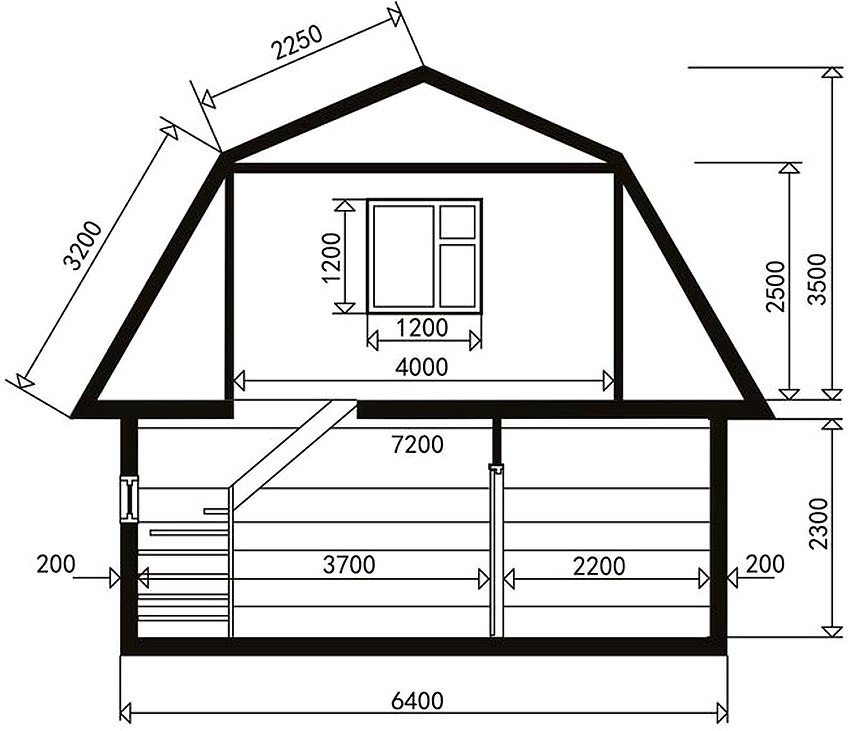
Drawing with the installation dimensions of a gable roof with a broken profile
Useful advice! If the attic room is small, designers recommend not to hem the ceiling. Interior decoration can be done up to the ridge, which will add space to the room.
Hip roof. This type of roof is a combination of a gable and hipped roof structure. Here the gables replace the triangle-shaped slopes called hips. The other two slopes are in the shape of an isosceles trapezoid. The upper parts of the slopes are equipped with dormer windows. The structure frame can be built on a rectangular base. The space under the roof can also be used as an attic.
Hip roof has a streamlined shape, perfectly self-cleaning and withstands winds, but differs in a more complex structure of the rafter system. In this regard, it is recommended to entrust the construction of such a roof only to specialists. With regard to the cost of construction, it should be noted that during construction there is a large percentage of roofing waste and significant costs for dormers.
Semi-hip designs. Intermediate model between hip and gable roof. A feature of this design is that the gable roof pediment is covered at the top with a small half-hip, which protects the ridge from wind load. The streamlining of this shape makes it appropriate to erect such roofs in regions where strong gusts of wind prevail.
The appearance of the roof is quite attractive in terms of design. In the triangular parts of the gables, you can equip full-size dormer windows. Half-hips serve as decorative elements. By design, this type of roof is rather complicated and involves the participation of professionals.
Hip roof models. One of the varieties of the hip structure includes a hipped roof. Such a model has 3 or more triangular slopes, which converge at the top at one point. All slopes are performed symmetrically to each other. Hipped roofs are used in cases where houses have the correct square or polygon shape. They are very attractive in appearance.
The tent structure is quite wind-resistant. The complexity of the construction of the rafter system is explained by the strictly symmetrical geometric shape of the roof. If sheet material acts as a covering, the amount of waste will be large. The cost will also be affected by the installation of roof window structures.
Useful advice! To make the hipped roof look aesthetically attractive, it is recommended to use shingles as a roof covering.
Multi-gable roofs. Such roofs are considered one of the most complex structures, both in terms of the structure of the rafter system and in terms of laying the roofing. This is due to the presence of a large number of ribs, valleys and other structural elements in the device. It is used in houses that have a complex polygonal shape.
The appearance of the multi-gable roof is very distinctive. With modern roofing materials with a rich color palette, the roof can be made bright and lively. In addition, under such a roof, you can equip side attics of a small area.
Dome structures. The domed or conical structure is a rounded roof without ribs, converging at the highest point. This is a rather rare type of roof of a private house. Photos of such structures indicate that in most cases such a roof is used only for certain elements of a building, for example, such as small turrets or round terraces.
Vaulted roofs. The basis of this structure is the base of rafters curved into an arc shape. It is rarely used as a roof for a private house. This roof shape is rational for large buildings such as sports facilities or public buildings. In private buildings it can be used as an additional element in combination with a structure of a different shape.
Spire roofs. The main difference between these exclusive roofs is the sharp angle created by the sharp slopes. The construction of the spire takes a lot of time, since here it is very precisely necessary to select the slope and material for the roof. As a rule, the spire is erected as a decorative element, crowning domed roofs or turrets.
Due to its complexity and laboriousness of execution, such a structure is erected only by professionals. Spiers are very rarely used in the design of the roofs of private houses. Photos show that they are mainly used in the construction of temples, buildings in the Gothic style and other monumental structures.
Useful advice! Even a single minor mistake made when erecting a steeple-shaped roof can ruin the appearance of the entire structure.
There is also such a thing as combined roofs. Such roofs in their design contain several types at once, for example, a combination of hip, hip, multi-gable and other forms.Combined roofs are difficult to design, build and maintain, but they always have an interesting and sophisticated look.
Mansard roof of a private house. Photos and descriptions of structures
An attic roof type is an excellent option to profitably increase the usable area of a private house. The dimensions of the additional room will determine the shape and type of the mansard roof. The geometric shapes of such a roof can have different configurations, and the roof itself can cover the entire building or a small part of it.
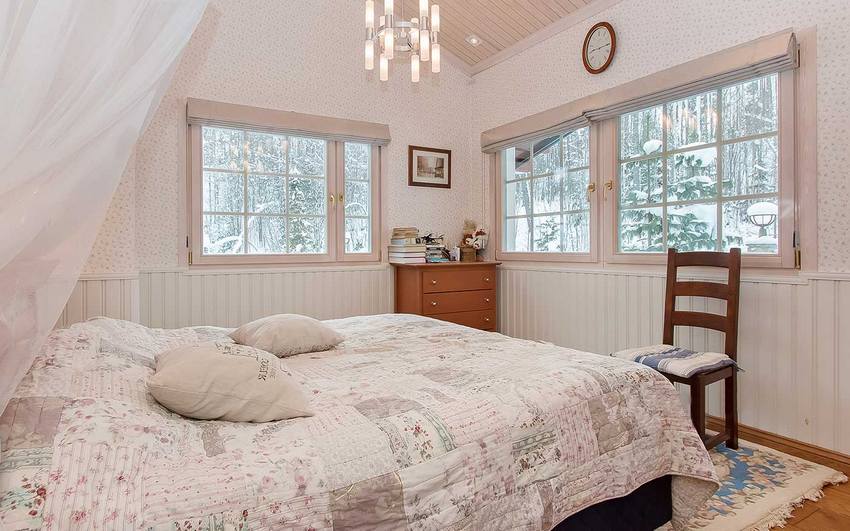
Thanks to the attic, you can significantly increase the usable area of the house, for example, by placing bedrooms there
Types of mansard roofs. Photos of private houses with a functional roof
There are several types of mansard roofs:
- single slope;
- symmetrical;
- asymmetrical;
- tent;
- broken line.
Shed roof attic. The mansard roofs in the single-pitched version look peculiar. Such structures are quite simple to construct due to the lack of a ridge and the difficulties that its arrangement entails. The attic space is formed due to the different heights of the walls on which the beams of the structure rest. The attic floor under such a roof turns out to be rather miniature.
Symmetrical mansard roof. This type of roof is built on the basis of a gable model. The walls of the attic room in this embodiment will have the same width and height. This form provides the ability to install complete window structures and doors leading to a balcony or terrace in the room.
Asymmetrical shape. Such roofs are obtained as a result of the hip placement of the slopes. It should be borne in mind that a room under an asymmetrical roof will have a small area. The outlines of the opposite walls of such a room will be as follows: two in the shape of a triangle, two in the shape of a trapezoid.
Hip roof structure. A room under such a roof can have a specific configuration: round, conical or pyramidal. In this regard, it is very difficult to fit windows or doors into the walls of such attics. Window structures of this shape will need to be made to order according to a special project, which will cause a significant rise in the cost of construction.
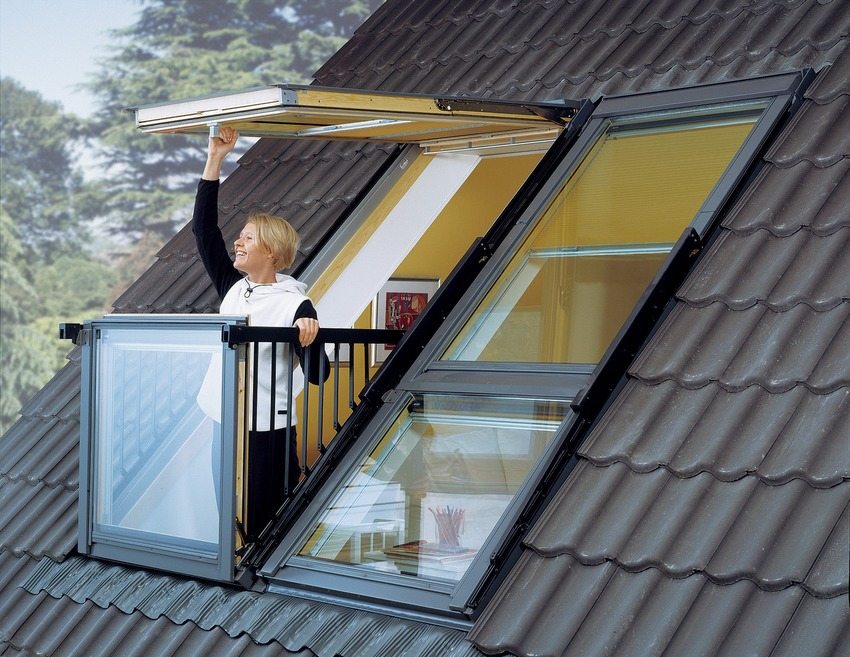
When erecting a roof, it is necessary to carefully consider the location and design of the roof window.
Useful advice! When equipping window structures in the attic, pay attention to how they will open. Inward and downward opening windows can cause injury to the person who opens them. The best option would be to open the window to the outside with a handle at the top.
Broken roof. If you want to make the most of your roof space, choosing a sloped roof is the right choice. In this case, it is possible to significantly reduce the so-called dead zones, the area of which cannot be used as useful. Due to the external bends of the edges, it is possible to expand the attic space, while the choice of a straight roof limits the rational use of the space under it.
The broken roof structures are distinguished by the small height of the walls of the rooms, which turned out under them. The installation of such a roof is justified when the attic is built on an already erected building. In this case, you do not have to worry about additional load on the foundation, the project of which did not initially imply the presence of an additional residential floor.
The roof is considered popular, the design of which is based on triangular shapes: upper and lower. The design diagram of the upper triangles assumes both a hanging and a layered rafter system, and the lower ones only layered.The upper slopes are based on isosceles triangles, and the lower ones have two right-angled triangles at the base.
Insulation and waterproofing of mansard roofs
The design of a particular attic roof depends on the load that the roof will be subjected to from above and below. It should not be forgotten that warm air currents rise and settle in the form of condensation on the inner surface of the roof. Therefore, the technology of erecting mansard roofs for private houses must necessarily take into account high-quality heat, steam and waterproofing.
Useful advice! When building a mansard roof, pay attention to the distribution of ventilation pipes and chimneys: do not allow them to be located in the valleys.
In order to be comfortable in the attic, it is necessary to use such an insulating material that will contribute to this regardless of the season. If the roofing cake is made in compliance with all technological rules, the microclimate in the room will be normal.
Knowing their main characteristics will help to make the right choice of thermal insulation materials, which include:
- resistance to temperature extremes;
- low thermal conductivity;
- moisture resistance;
- invulnerability to mechanical stress;
- environmental friendliness;
- fire safety;
- density up to 250 kg / m³.
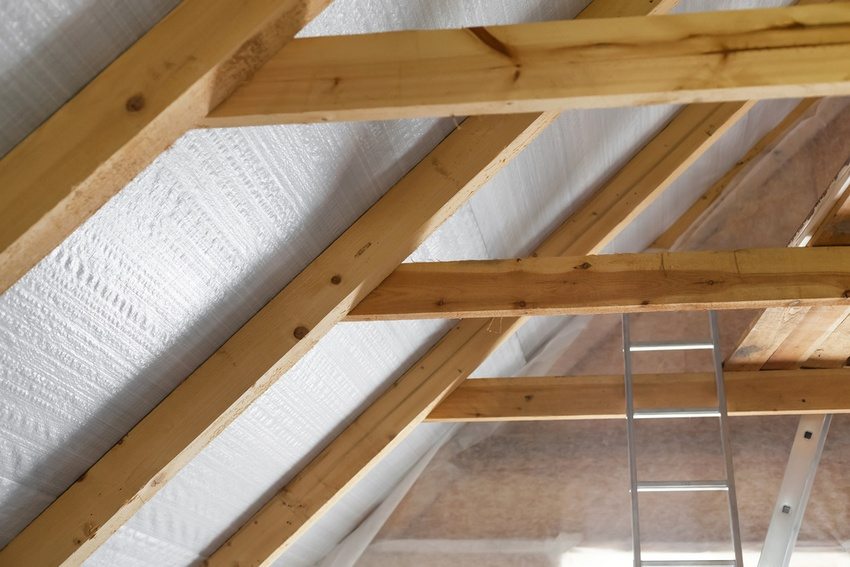
The technology of erection of mansard roofs must necessarily take into account high-quality heat, steam and waterproofing
The technology of thermal insulation in the attic is similar to the insulation of conventional roofs, however, due to some criteria, increased requirements are imposed on it. The role of the walls in the attic rooms is played by slopes and gables, due to which they overheat in the summer and quickly cool in the cold season. Therefore, the sequence of layers of the cake must be strictly observed:
- Vapor barrier layer.
- Insulation material.
- Ventilation (air) gap.
- Waterproofing layer.
- Roofing material cover.
When using insulation, you should pay attention to its thermal conductivity (the ability to retain and transmit heat). The lower the thermal conductivity, the better the material will retain heat in the room, protecting it from cooling. Mansard roofs are more susceptible to heat loss during winter, as heat flows upward, approaching the roofing.
In winter, the following process is observed: the snow covering the roof surface acts as a kind of heat insulator. If the heat loss is large, the snow on the roof begins to melt, turning into a dense crust of ice, which does not retain heat and creates an additional load on the roof. Correctly applied thermal insulation will prevent snow melting and ice formation.
In extreme heat, the attic room gets very hot. To avoid this, arrange thermal insulation on the inside. The number of layers for internal protection depends on the properties of the material. For these purposes, they usually use: polyurethane foam, mineral wool, extruded polystyrene, slag wool, glass wool, foamed glass. Straw, slag, wood shavings, and reed panels will be used from natural insulation materials.
Roof for a private house. Roof types by design: shape matters
Modern roof design involves many different and original designs. The shape of the roof determines not only the proper degree of protection of the house from external influences, but also provides architectural expressiveness.In private construction, the choice of design is limited only by the financial capabilities of the owner of the house, which allows the roof to become the main decorative element in the design of the entire house.
Beautiful roofs of private houses: photo gallery of various options
It is possible to unambiguously advise the optimal type of roof, taking into account not only the construction technology, but also the wishes of the owner of the house. Architectural preferences in the private sector also depend on the area where the house is located, since each region has long been distinguished by its style and originality. To find out what the roofs of private houses are like (photos of numerous options are available on the Internet), you need to study this issue, after which the choice of the most acceptable option will not be difficult.
Despite the simple design, there are many ways to combine a flat roof with the modern design style of private construction. Monoskat roofing option has a small set of components and does not require significant financial investments. Many people use a new original direction in the design of flat roofs - landscaping. The roof covered with flowers and greenery will add a dose of romance to the whole house.
The most popular in suburban villages is the gable roof. Photos of private houses show typical models of gable structures. The gable roof with slopes different in length and slope looks original, the classic model with symmetrical inclined planes is more strict. An important detail is the possibility of arranging an attic under a gable roof of a one-story private house. The photo characterizes the simplicity and functionality of this type of roof.
Photos of hip roofs of private houses indicate that such a roof design is used mainly for large cottages. Houses with such roofs look more solid and presentable. Due to the absence of gables in the design, the height of houses with a hip roof visually seems to be less, but this feeling is completely compensated for by the presence of dormer and dormer windows. They perfectly illuminate the attic space and make the facade of the whole house more picturesque.
Broken roof structures have exceptional ergonomic advantages. Photos of broken roofs of private houses clearly illustrate the maximum efficiency of using usable space. Despite the fact that the construction of such a structure entails high costs, these models are actively used in private construction.
Useful advice! Those who dream of a two-story cottage, but are limited financially, should pay attention to the attic roof types. This will be an excellent option with minimal investment.
For lovers of unusual design, a multi-gable roof is the best choice. Such designs can be classified as real masterpieces. Their uniqueness lies in the large number of ribs, faces, tongs and slopes. This form of roof has become popular in modern private construction of cottages with attic rooms. If a successful project is selected, you can build a unique structure associated with the roofs of fabulous towers.
Having considered all the options for roofs for private houses and carefully understanding the features and benefits of each of them, you can make the best decision in your case. The main thing is that your home must be under reliable protection.



